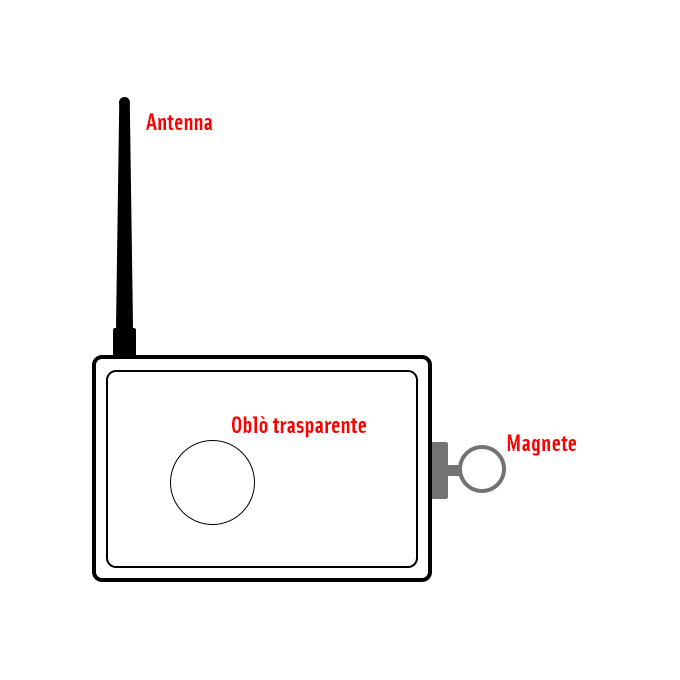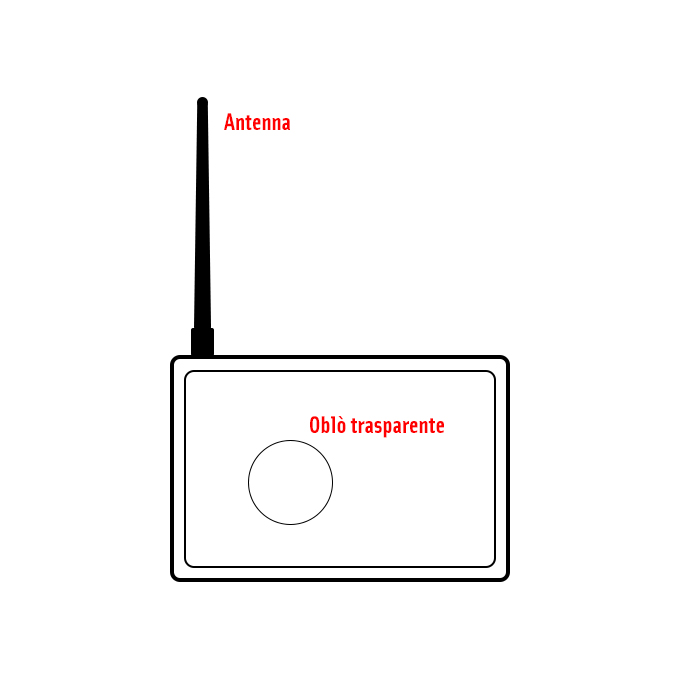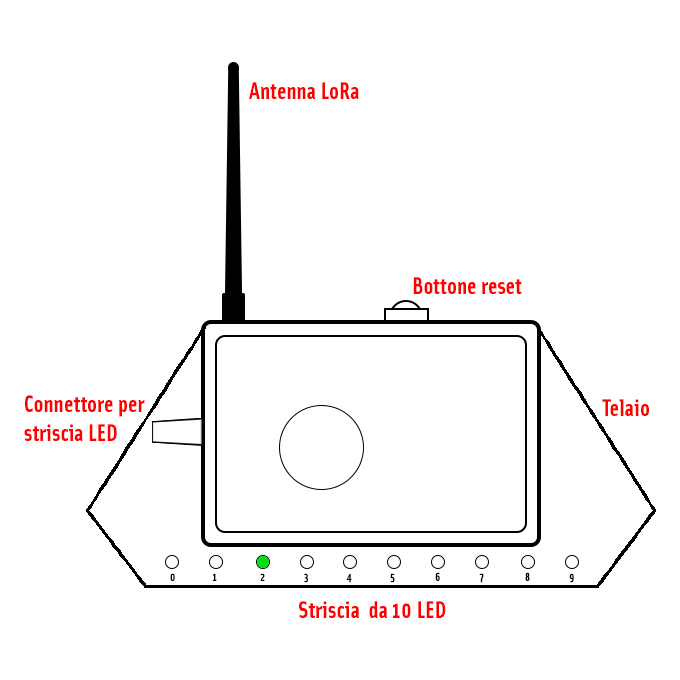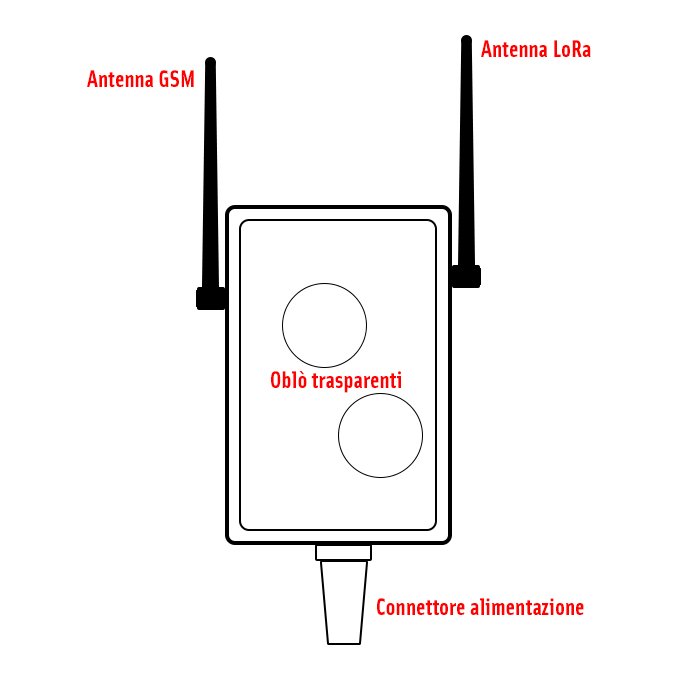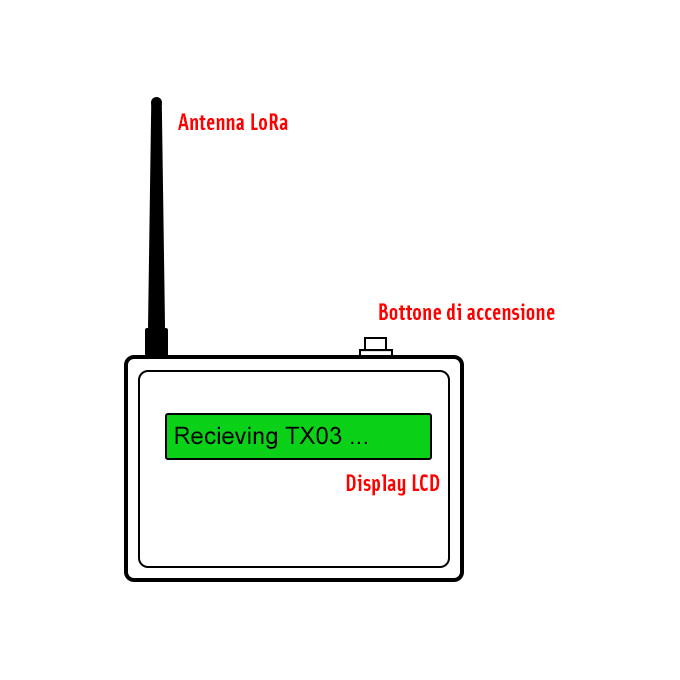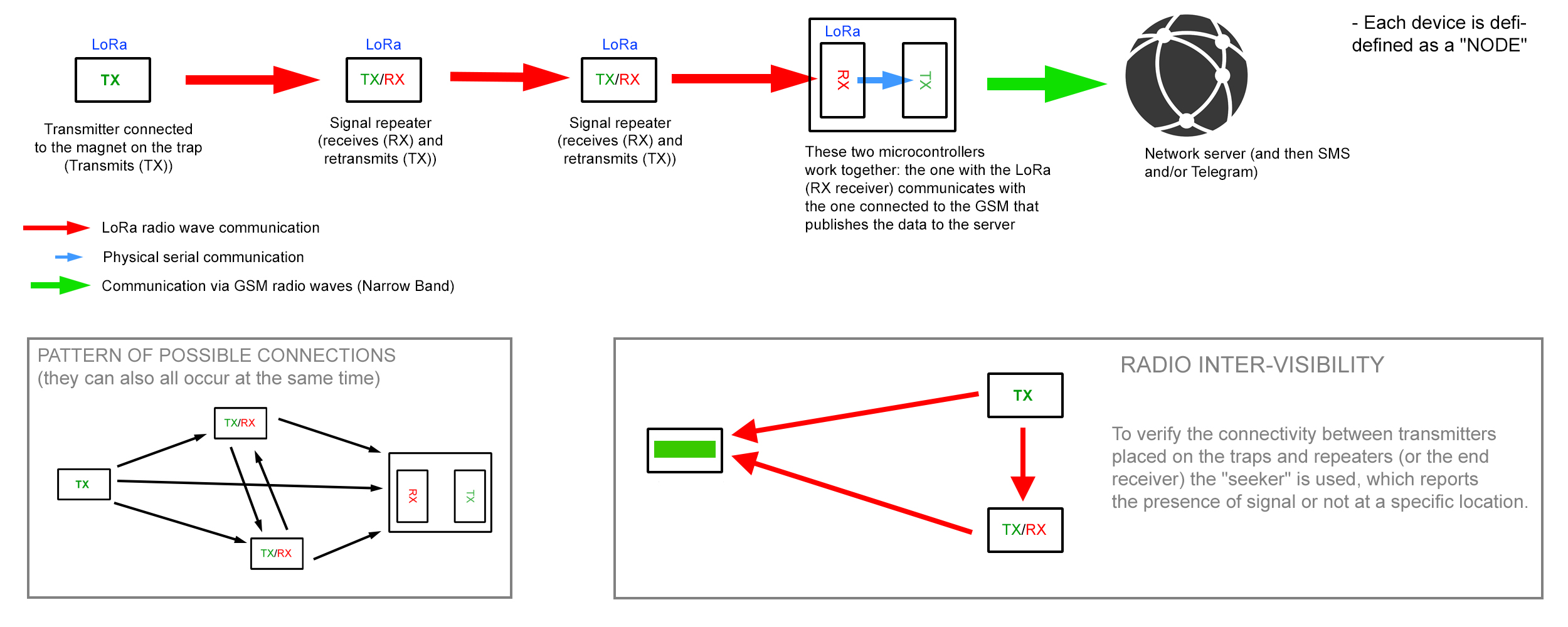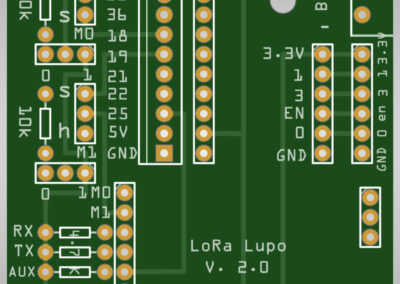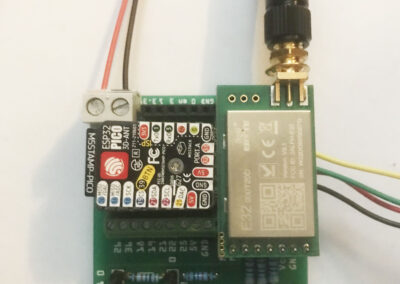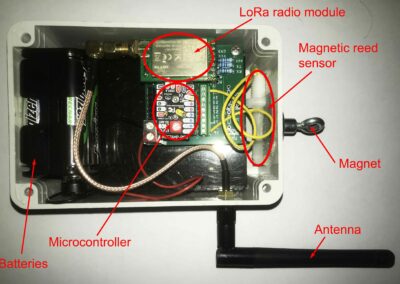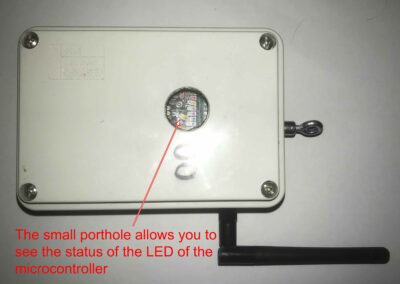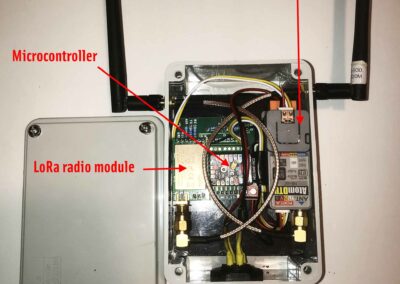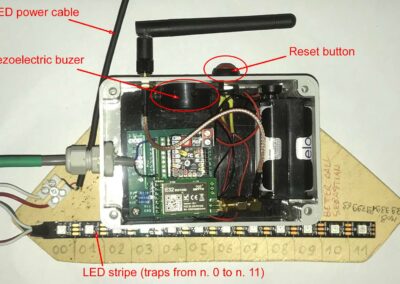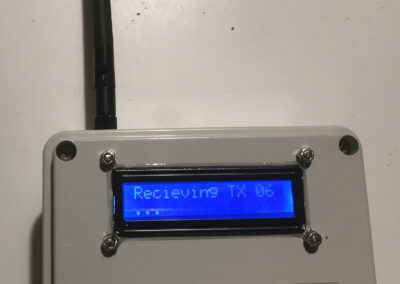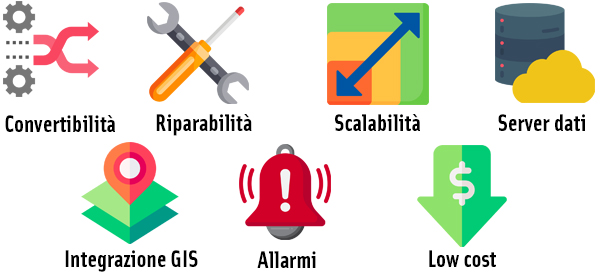LoRa WOLF
![]() Requirements:
Requirements:
– to implement remote alarm devices connected to a series of traps placed in different locations in a given study area;
– the alarm must be immediate to prevent the animal from being caught in the trap for too long, this is to shorten the shock time due to the capture itself;
– the alarm transmission system must work in areas not covered or only partially covered by the mobile phone network.
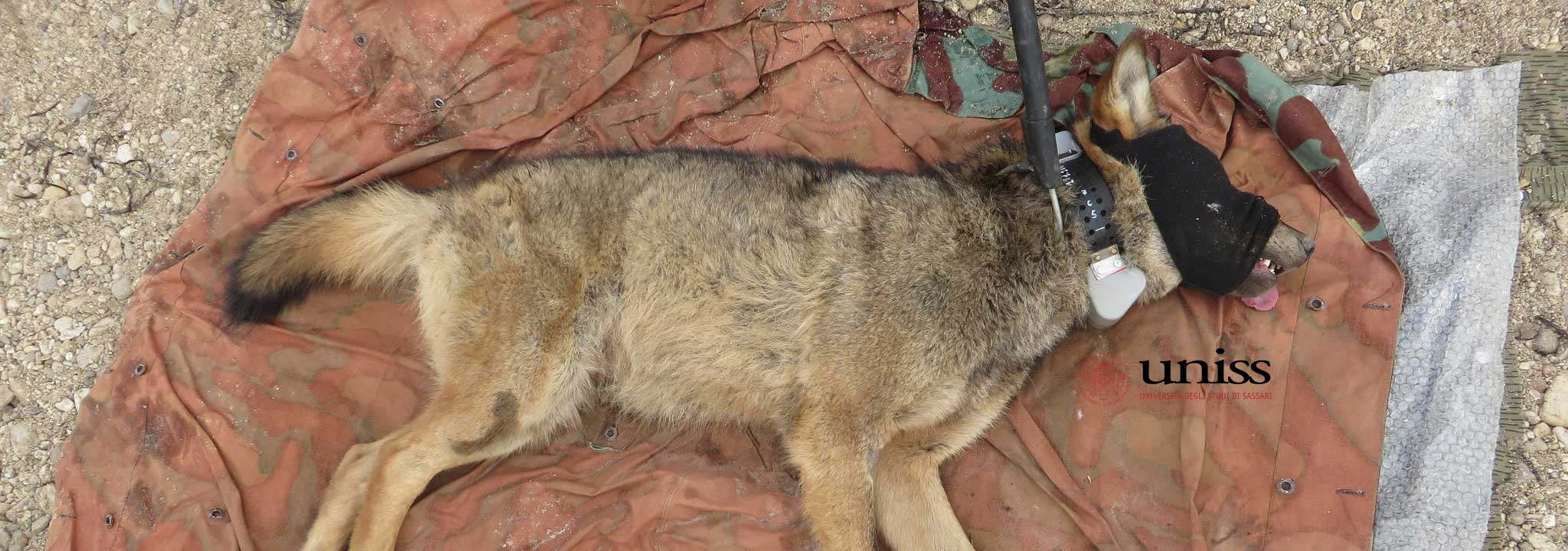
 Solution:
Solution:
For areas with completely absent mobile phone coverage, a radio communication system between transmitters (located on the traps) and the single receiver (located in the building where the wildlife operators are housed) was implemented with LoRa modules equipped with Semtech’s transceiver. The operator is warned of trap actuation both visually (numbered LED corresponding to the specific trap) and audibly (piezo buzzer). The time between the activation of the trap and the final reception of the alarm is approx. 30 seconds.
For areas with partial mobile phone coverage, a radio communication system was implemented between transmitters (placed on the traps) and the single receiver (placed at a location where there is the presence of mobile phone radio signal) that communicates directly with a GSM modem operating on the Narrow Band (NB). The modem takes care of sending the data to a server dedicated to IoT devices, the server in turn is constantly monitored by a third-party platform that sends the final alarm message to the Telegram application. The time between the activation of the trap and the final reception of the alarm on Telegram is approx. 2 minutes.
This project was implemented on behalf of the Dipartimento di Medicina Veterinaria dell’Università di Sassari.
Specifications:
Weight: 220 g (transmitter and repeater), excluding batteries.
Dimensions: 12.5 x 8.5 x 5.5 cm.
Sensor: magnetic, activated by lanyard attached to the trap.
LoRa radio modules: Ebyte E32 with SX1276 transceiver from Semtech.
GSM radio module: Simcom SIM7020.
Microcontroller: ESP32 Pico (for both LoRa module control and GSM module control).
Connectivity: LoRa and NB (Narrow Band).
Power supply: with 4 AA-size rechargeable batteries (LoRa transmitters, repeaters and receivers), 12V battery for GSM modem. Solar panel power supply also possible.
Autonomy: approx. 30-35 days with 2000 mA batteries.
Enclosures: Gewiss-Bianchi IP 56.
TRANSMITTER (TX): 1- the magnet on the transmitter (TX) is connected to the trap via a cable, 2- the removal of the magnet, when the trap is triggered, activates the alarm which is sent via LoRa radio modules.
REPEATER (RX/TX): Receives output signals from transmitters and other repeaters and sends them back to other transmitters and/or the final receiver. It serves as a radio link between the transmitters placed on the traps and the end receiver.
RECIEVER (RX): the end receiver picks up signals sent by the transmitters placed on the traps or repeaters and triggers both an audible (buzzer) and visual (numbered LED corresponding to the respective trap) alarm.
NARROW BAND REPEATER (RX/TX-NB): this device receives signals from transmitters placed on the traps and/or repeaters and sends the alarm to a server using the Narrow Band of the cell phone network. A third-party platform reads the data from the server and sends the alarm directly to the dedicated Telegram group. Latency time: approx. 2 minutes between the triggering of the trap and the alarm on Telegram.
SEEKER (SK): Receives the signal from transmitters placed on traps or repeaters and displays which trap the alarm is coming from. It is used for the placement of repeaters that create radio links between the transmitters on the traps and the end receiver (either RX or RX/TX-NB).

